The external memory, called “Secondary Memory“, can store data and information permanently.
This memory can store a massive amount of data, such as songs, videos, documents, files, folders, images, and software.
Let us discuss the Differences between Internal and External Memory in Computers and mobile with their types, features, characteristics, advantages, and disadvantages.
Computer memory is used to store data and information permanently and temporarily. This data and information can be recalled whenever a user requests or demands.
The memory is categorized as internal and external memory.
The RAM and ROM fall in the category of internal memory.
These types of memory are “Volatile Memory” or “Read Only Memory“, “Temporary Memory“, or “Main Memory“.
This memory is not capable of storing or holding data and information permanently.
They tend to lose data when there is a power failure.
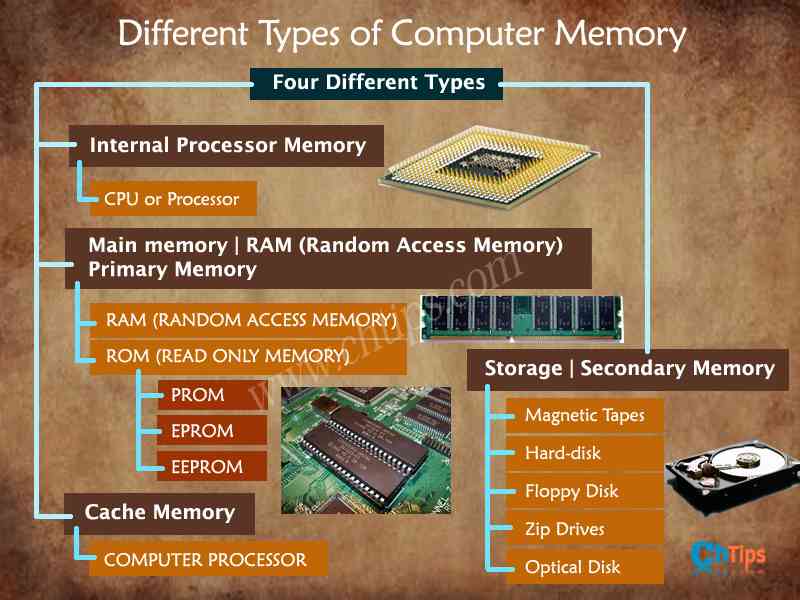
What is Internal Memory? Explain RAM and ROM.
The internal memory is installed inside the computer system.
Internal storage stores or hold essential system files and applications which are most important for the computer system.
Any computer software and applications are installed with the help of internal memory, such as RAM.
In Mobile devices, applications and software are directly installed in the internal memory.
The internal memory or internal storage interacts directly with the central processing unit.
There are different types of internal memory which can be categorized below.
- Internal Memory
- External Memory
- Cache Memory
Primary memory or main memory is also called “Semiconductor Memory “.
They are temporary memory that saves data and information temporarily.
The data is lost when there is power loss or power failure. The main memory is fast and can hold currently used and accessed data.
The internal memory is faster, smaller, and lighter, consuming less power than secondary or external storage devices.
They are cheaper compared to external memory.
They are the most crucial memory of a computer system; if absent, the computer system fails to load and boot.
Every computer needs a primary memory to work correctly.
MB (Mega-Bytes) and GB (Gega-Bytes) are the primary memory capacity. Nowadays, they come in huge capacities ranging from 2 GB to 16 GB.
The main memory is further classified into two categories
- RAM (RANDOM ACCESS MEMORY)
- ROM (READ-ONLY MEMORY)
What are the 3 Types of Internal Memory?
The three types of internal memory.
- Main Memory or Primary Memory.
- Secondary Memory.
- Cache Memory.
Examples of Internal Memory
- Read-Only Memory [ROM].
- Random Access Memory [RAM].
- SDRAM
- DRAM
- SRAM
- PROM
- EPROM
- EDORAM
- DDR SDRAM
What is Internal Memory Used For?
Internal memory is the most vital part of any computer and mobile device used for booting any mobile computing device.
They are responsible for holding and saving essential system files for starting the computer system.
What is External Memory
External or secondary memory is also called "AUXILLARY MEMORY" and "PERMANENT MEMORY".
This type of memory is called non-volatile memory, which stores and holds data and information almost permanently.
The data and information is stored even if there is a power loss or failure.
They are slower than memory compared to internal memory like RAM or ROM.
The most significant feature of secondary memory is that it can permanently save an incredible amount of data.
Therefore they have easily replaced their counterparts.
Examples of External Memory
- Computer Hard Disk Drive.
- Pen Drives.
- SSD {Solid State Drives}.
- Optical Disks.
- Cloud Storage
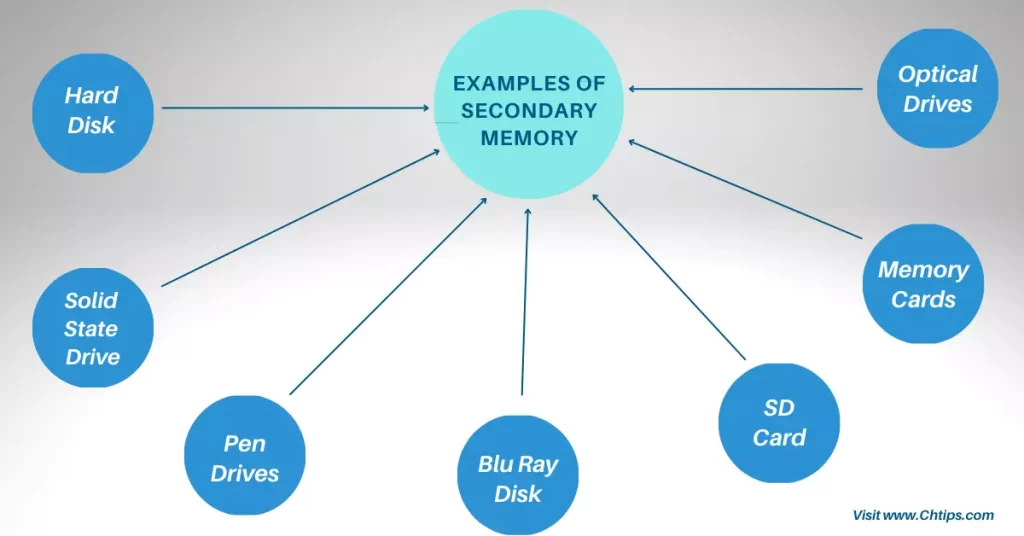
Types of External Memory
- SDD [Solid State Drives]
- Flash Drives
- NAS [Network Attached Storage]
- SAN [Storage Area Network]
- Cloud Storage
- Magnetic Tapes
- Magnetic Disk
- Hard-Disk
- Floppy Disk
- Zip Drives
- Optical Disk
- Pen Drives
Uses of External Memory
- Storage
- Backups
- Digital Editing
- Data Sharing
- Gaming
Differences Between Internal And External Memory In Computers With Image
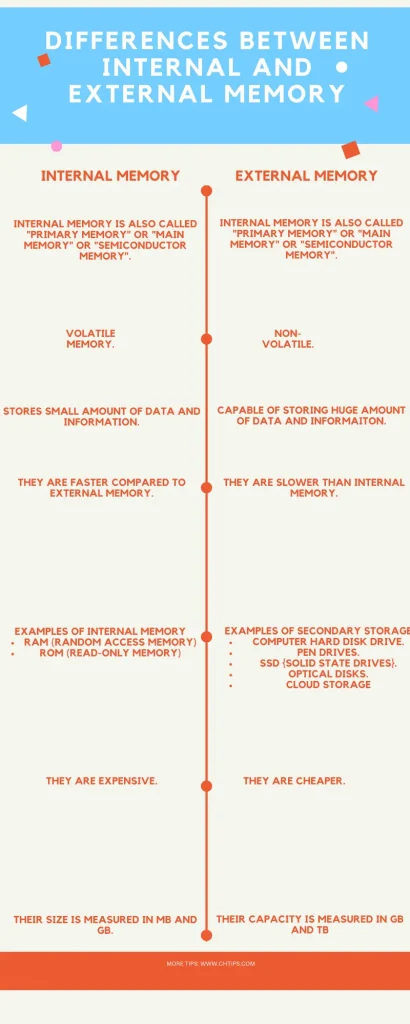
Differences Between Internal And External Memory In Computers in Tabular Form
| # | Internal Memory | External Memory |
| 1 | Volatile Memory. | Non- Volatile. |
| 2 | Internal Memory is also called “Primary Memory” or “Main Memory” or “Semiconductor Memory”. | External or secondary memory is also called “AUXILLARY MEMORY” and “PERMANENT MEMORY”. |
| 3 | They are installed internally. | They are attached using cables and wires. |
| 4 | Stores a small amount of data and information. | Capable of storing huge amounts of data and information. |
| 5 | They are faster compared to external memory. | They are slower than internal memory. |
| 6 | Examples of internal memory RAM (RANDOM ACCESS MEMORY) ROM (READ-ONLY MEMORY) | Examples of Secondary storage Computer Hard Disk Drive. Pen Drives. SSD {Solid State Drives}. Optical Disks. Cloud Storage |
| 7 | Their capacity is measured in GB and TB. | They are installed additionally for better storage capacity. |
| 8 | They directly interact with the central processing unit. | They do not directly interact with the CPU. |
| 9 | They are expensive. | They are cheaper. |
| 10 | The internal memory is faster, smaller, and lighter, consuming less power | They require more power than internal memory. |
| 11 | Every computer needs a primary memory to work correctly | The computer can function even if secondary memory is absent. |
| 12 | Their size is measured in MB and GB. | Their capacity is measured in GB and TB |
List of Internal and External Storage Devices
| # | Internal Storage | External Storage |
| 1 | Blu-Ray. | Hard Drive Disks. |
| 2 | CD-ROM. | Floppy Disks. |
| 3 | DVD. | Compact Discs (CDs). |
| 4 | Floppy Drive. | DVD and Blu-Ray Discs. |
| 5 | Hard Drive, and SSD. | USB Flash Drives. |
5 Types of RAM [Random Access Memory]
- Static RAM (SRAM)
- Dynamic RAM (DRAM)
- Synchronous Dynamic RAM (SDRAM)
- Single Data Rate Synchronous Dynamic RAM.
- Double Data Rate Synchronous Dynamic RAM.
5 Differences Between RAM and ROM?
| # | RAM | ROM |
| 1 | Random Access Memory is “Volatile Memory”. | Read Only Memory is “Volatile Memory”. |
| 2 | RAM can store data, instructions, and information temporary. | ROM can store data, instructions, and information permanently. |
| 3 | Data, instructions and information is lost when there is no power supply. | Data, instructions and information is not lost when there is power failure. |
| 4 | They are high speed memory. | They are slower compared to RAM. |
| 5 | RAM are expensive. | ROM are cheaper. |
| 6 | RAM can be extended according to users needs and requirements. | They can not be extended. |
Differences Between Internal And External Memory PDF Download
What is an Auxiliary Memory
The secondary memory is also called Auxiliary Memory.
Secondary memory is prevalent and, therefore, extensively used and utilized.
The secondary memory is not part of the core architecture of any computer system.
They are the additional part or devices which can be added at any time according to the need and requirement.
They are permanent memory and can store a massive amount of data and information.
The data transfer speed of external storage devices is slower than internal storage devices like RAM and ROM.
What is Cache Memory?
Cache memory is a very high-speed memory and is installed near the processor.
It is a type of volatile memory that also provides high-speed data access and exchange to the processor.
They also help store computer programs, applications, and data with information.
Whenever processing data that has already had a sample in the cache memory is requested, it does not need to go to the main memory or the hard disk to fetch the data.
The cache memory is the fastest memory available, acting as a buffer between RAM and the CPU (Central Processing Unit).
The processor checks if a corresponding entry is available in the cache whenever it needs to read or write a location. Hence, it reduces the time required to access the information from the main memory.
Hardware Cache is also called a processor cache and is a physical component of the processor. It depends on how close the cache is to the processor core.
It can be a primary and secondary cache memory.
The primary memory cache is directly joined to the processor. The speed depends on the closeness and size of the cache.
The more data is stored in the cache, the faster the processing, and the small storage capacity of the chip results in slower processing.
The data present in the cache memory results in fast processing and vice versa.
The data in the cache has less data and information, resulting in slow speed and data exchange.
Units of Memory
- Bit
- Nibble
- Byte
- word
- Kilobyte
- Megabyte
- Gigabyte
- Terabyte
- Petabyte
- Exabyte
- Zettabyte
- Yottabyte
| Unit | Abbreviation | Storage |
| Bit | B | Binary Digit 0 and 1 |
| Nibble | —- | 4 bits |
| Byte | B | 8 bites |
| Word | —- | 8 to 96. |
| Kilobyte | KB | 1024 bites |
| Megabyte | MB | 1024 KB |
| Gigabyte | GB | 1024 MB |
| Terabyte | TB | 1024 GB |
| Petabyte | PB | 1024 TB |
| Exabyte | EB | 1024 EB |
| Yottabyte | YT | 1024 YB |
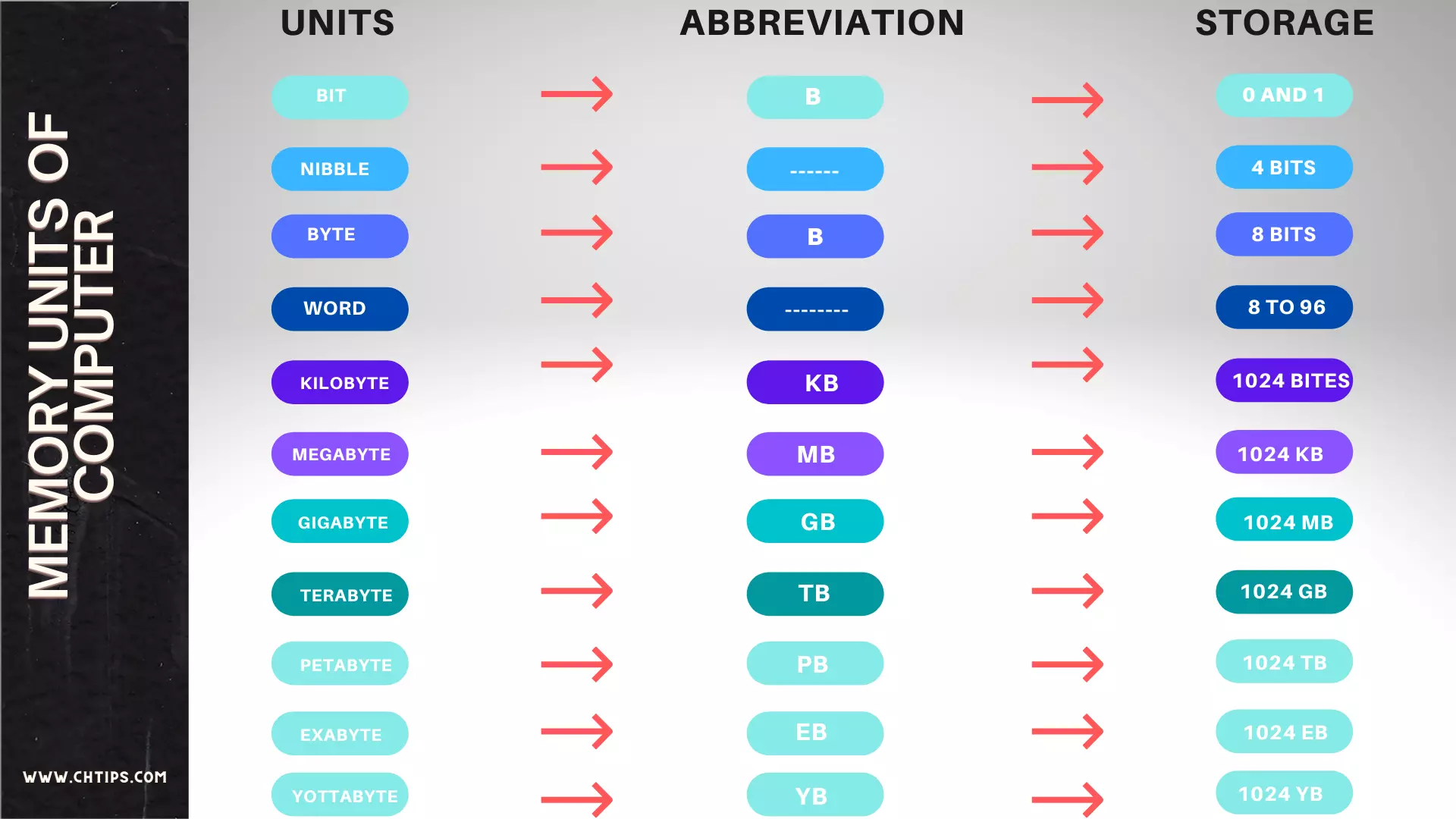
Useful Video: On Computer Memory
Importance of Number System
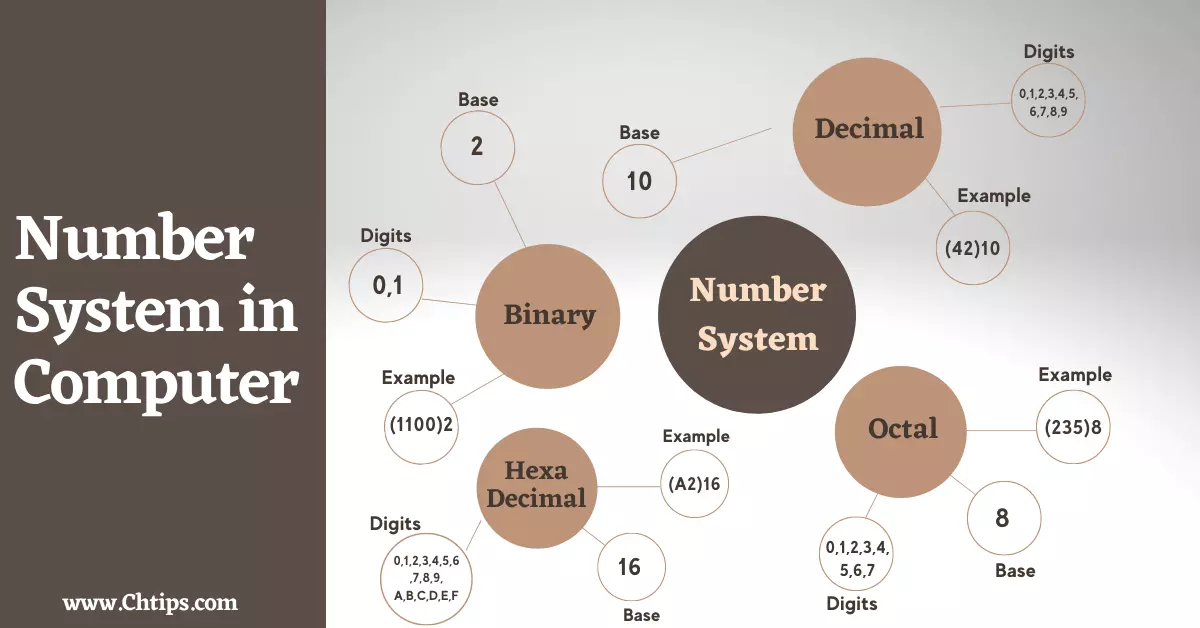
Related Articles
- 10 Uses of Computer in Different Fields With Pictures
- 10 Limitations of Computer System
- 10 Uses of Multimedia in Different Fields
- Types of Secondary Memory in Computer
- 5 Functions of Control Unit in Computer System
- How Do Computers Works at the Most Basic Level
- Characteristics and Features of Fifth Generation Computer
- What is the Evaluation of Information System?
- 12 Examples of Secondary Memory in Computer System
- What is Buffered Memory and Their Differences
- 13+ Characteristics of Primary Memory
- Smallest Unit of Computer Memory Storage in Computer System
- What is a Computer Memory Definition and Their Types
- 10+ Characteristics of Secondary Storage Devices
- Characteristics of Virtual Memory in Computer
- Advantages and Disadvantages of Supercomputers
- Computer Basic Tutorials
Frequently Asked Questions [FAQs]
What is External Memory Short Answer?
External Memory is a kind of memory that is an additional storage device such as pen drives, hard disks, CDs (compact disks), and DVDs (digital versatile disks).
Is RAM External Memory?
No, RAM is internal memory.
What is ROM Storage?
ROM [Read Only Memory]. It is a type of non-volatile memory.
What is Cache?
It is a memory where data and information are stored temporarily for better functionality and performance of the computer system.
Is SSD a ROM?
ROM stands for READ ONLY MEMORY. SSD is not ROM.
Are Photos Stored in RAM?
No, RAM stores data and information which is necessary to the computer system as well as it stores information that is important for booting the system.
ROM is Internal or External Memory
ROM is an Internal, Non-Volatile Memory.
Three types of external memory?
1. Magnetic disk.
2. Raid.
3. Optical memory.
Different types of internal memory?
RAM(Random Access Memory) and ROM(Read Only Memory).
2 Types of external hard drives?
Hard Disk Drives and SSD [Solid State Drives].
What is faster than SSD?
NVMe Storage
Get In Touch
I have also written and compiled some articles on computers and telecommunications, and please go through them.
I hope you will like reading it.
I hope that all the questions and queries related to Differences Between Internal And External Memory In Computer & Memory have been answered here.
If you have any questions related to Internal Memory VS External Memory.
Don’t hesitate to contact me, and if you need to add, remove, or update anything from the article, please let me know in the comment section or via email.
I will be more than happy to update the article. I am always ready to correct myself.
I was hoping you could share this article with your friends and colleagues; this motivates me to write more on related topics.
!!! Thank You !!!